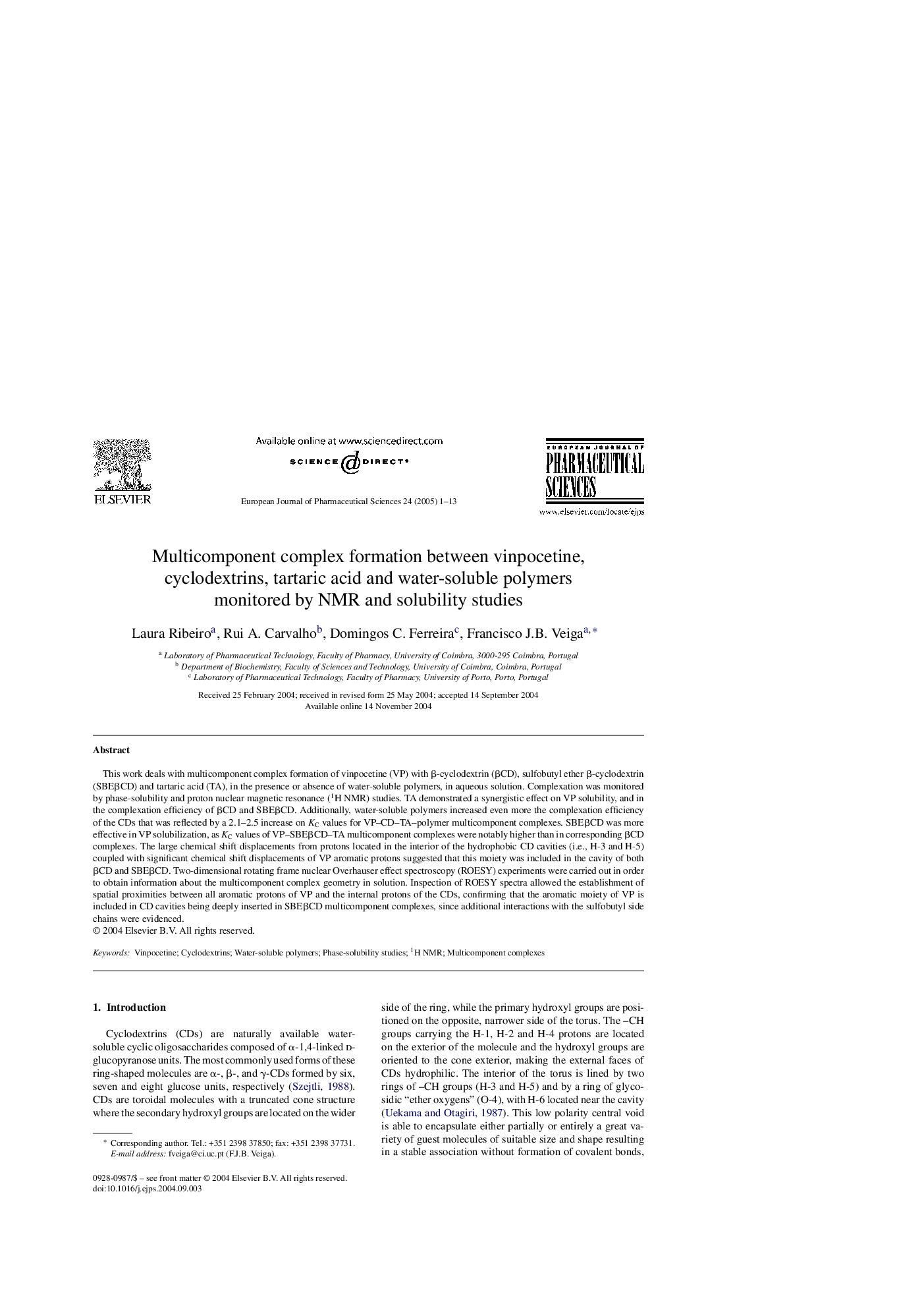| Article ID | Journal | Published Year | Pages | File Type |
|---|---|---|---|---|
| 9917774 | European Journal of Pharmaceutical Sciences | 2005 | 13 Pages |
Abstract
This work deals with multicomponent complex formation of vinpocetine (VP) with β-cyclodextrin (βCD), sulfobutyl ether β-cyclodextrin (SBEβCD) and tartaric acid (TA), in the presence or absence of water-soluble polymers, in aqueous solution. Complexation was monitored by phase-solubility and proton nuclear magnetic resonance (1H NMR) studies. TA demonstrated a synergistic effect on VP solubility, and in the complexation efficiency of βCD and SBEβCD. Additionally, water-soluble polymers increased even more the complexation efficiency of the CDs that was reflected by a 2.1-2.5 increase on KC values for VP-CD-TA-polymer multicomponent complexes. SBEβCD was more effective in VP solubilization, as KC values of VP-SBEβCD-TA multicomponent complexes were notably higher than in corresponding βCD complexes. The large chemical shift displacements from protons located in the interior of the hydrophobic CD cavities (i.e., H-3 and H-5) coupled with significant chemical shift displacements of VP aromatic protons suggested that this moiety was included in the cavity of both βCD and SBEβCD. Two-dimensional rotating frame nuclear Overhauser effect spectroscopy (ROESY) experiments were carried out in order to obtain information about the multicomponent complex geometry in solution. Inspection of ROESY spectra allowed the establishment of spatial proximities between all aromatic protons of VP and the internal protons of the CDs, confirming that the aromatic moiety of VP is included in CD cavities being deeply inserted in SBEβCD multicomponent complexes, since additional interactions with the sulfobutyl side chains were evidenced.
Related Topics
Health Sciences
Pharmacology, Toxicology and Pharmaceutical Science
Drug Discovery
Authors
Laura Ribeiro, Rui A. Carvalho, Domingos C. Ferreira, Francisco J.B. Veiga,
